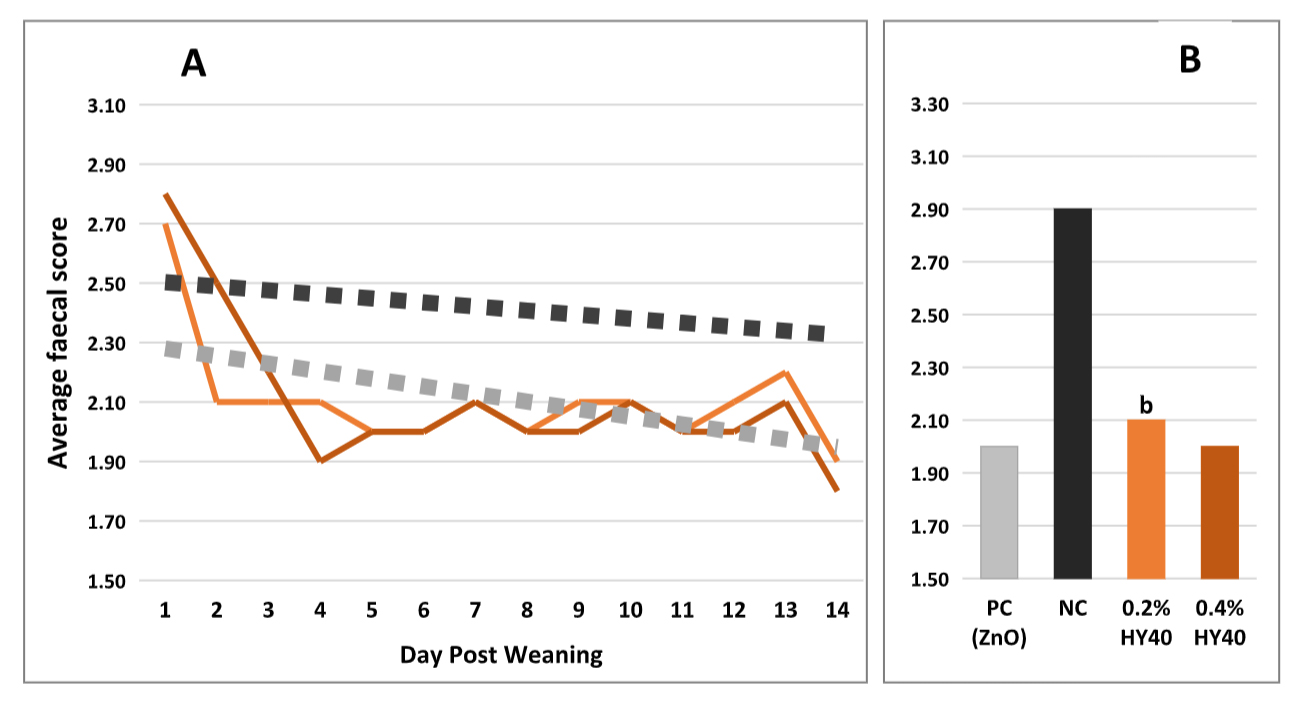Post-weaning diarrhoea (PWD) is a widespread and costly problem of modern pig production. We have been thinking: how can we contribute to solving this complex problem? First, what is post-weaning diarrhoea: PWD is a multifactorial disease involving many factors, but enterotoxigenic E. coli (ETEC) are considered as main etiological agents. PWD occurs when the lactogenic immunity of piglets acquired with IgA antibodies in the sow’s milk suddenly stops at weaning. Then the ETEC bacteria can adhere to the intestinal epithelial cells of the piglets and release their enterotoxins, leading to diarrhoea, dehydration, weight loss and even mortality within the first two weeks after weaning. Other factors, like weaning related stress and the transient anorexia cause a cascade of events resulting in the decline of the gut epithelial integrity - morphological, enzymatic, and inflammatory change, which increase the risk related to the gut dysbiosis and further PWD (Moeser et al. 2017). In this context, many feeding strategies aim to sustain one or more pillars of piglet gut health: immune fitness, epithelial barrier, microbiota modulation and oxidative status, as described by Chalvon-Demersay et al. (2021).
So, what could we do? We conducted a 42-day dose-response study using Livalta™Cell HY40, our Saccharomyces cerevisiae yeast-derived product. Piglets were assigned to three groups: a control group without supplementation (Negative Control), a group receiving therapeutic ZnO (Positive Control), and two groups with varying concentrations of HY40 (0.2% and 0.4%). Parameters assessed included overall gain, feed efficiency, and daily faecal scores.

Figure 1 A, B: Effect of dietary application of therapeutic levels of ZnO or different dosages of Livalta™Cell HY40 on average faecal score (n=10) during days 1 - 14 (A) and day 42 post-weaning (B). Scores 1 to 3 indicate increasing faeces softness with 3 = diarrhoea. (Different letters indicate significant differences at P<0.05).
The performance metrics (body weight gain and feed efficiency) of piglets receiving 0.2% and 0.4% HY40 supplementation were comparable to those in the PC group and showed significant improvement over the NC group (not shown). Notably, faecal scores during the initial 14 days (Fig. 1A) and at day 42 post-weaning (Fig. 1B) indicated a comparable efficacy of HY40 to therapeutic ZnO levels in maintaining stool consistency.
These findings suggest that Saccharomyces cerevisiae yeast-derived products, specifically Livalta™Cell HY40, may offer a viable alternative to traditional therapeutic agents in managing PWD in piglets. Their role in supporting gut health, particularly in terms of microbiota modulation and epithelial barrier function, is noteworthy.
This study underlines the potential of leveraging inherent functionalities in specific feed ingredients, like Livalta™Cell HY40, as a sustainable approach to enhance gut health and overall welfare in piglets post-weaning. While not a direct replacement for antibiotics and therapeutic ZnO, such alternatives could play a crucial role in the future of pig production.
Please contact us to find out how Livalta can help you responsibly meet your animals needs
Latest news
Livalta develops new, responsible proteins for feed and food using the latest science and technology.!

